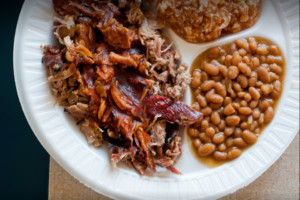 Barbecue is a cherished tradition that brings together bold flavors and cultural influences. Great barbecue depends not only on the quality of the meat but also on skilled preparation. A key element is the dry rub, which can turn ordinary cuts of meat into extraordinary meals. As barbecue becomes more popular worldwide, learning how to create the perfect dry rub has become essential for food lovers and professionals.
Barbecue is a cherished tradition that brings together bold flavors and cultural influences. Great barbecue depends not only on the quality of the meat but also on skilled preparation. A key element is the dry rub, which can turn ordinary cuts of meat into extraordinary meals. As barbecue becomes more popular worldwide, learning how to create the perfect dry rub has become essential for food lovers and professionals.
What makes a memorable dry rub is its essential components. A balanced mix of sweet, savory, spicy, and aromatic elements adds depth to different meats. Using quality ingredients creates unique flavors suited to specific cuts. It’s important to balance flavors, customize rubs, and apply effective cooking techniques to ensure great barbecue. Whether for personal enjoyment or professional growth, these insights enhance the barbecue experience.
The Building Blocks of a Dry Rub
A great dry rub relies on a balance of four key components: sweet, savory, spicy, and aromatic. When these elements are combined correctly, they enhance the meat’s natural flavors, creating a rich and satisfying taste. Sweetness, often from brown sugar or honey powder, softens heat and adds depth. Savory ingredients like salt and garlic powder ground the blend and boost umami. Spiciness, usually from black pepper, cayenne, or paprika, adds an exciting kick.
Aromatics like rosemary, thyme, or cumin provide a fragrant touch with every bite. The art is in achieving balance—neither too sweet nor too salty. Crafting the perfect dry rub is a process, allowing cooks to adjust proportions and ingredients to suit their style and the meat they’re using, ultimately creating a harmonious flavor.
Selecting Ingredients for Maximum Flavor Impact
To unlock the full potential of your barbecue, start with high-quality spices and herbs, which are key to creating bold flavors. Fresh, potent ingredients ensure robust tastes, while stale or low-quality options can lead to bland results. Combining these spices carefully allows you to create unique flavor profiles that enhance specific meats. For example, pairing rosemary with lamb or brown sugar and cumin with pork highlights their natural qualities and elevates your barbecue.
Different meats need different seasonings; a hint of nutmeg can complement beef, while poultry benefits from lemon zest and basil. Paying attention to these details, especially the subtleties of spice combinations, can turn a casual barbecue into a culinary delight. Embrace the adventure of experimenting with blends to learn what excites your palate.
Balancing Flavors in Your Rub
Balancing flavors in your dry rub is a must for enhancing the meat’s natural taste. Focus on the four key components: sweetness, savoriness, spiciness, and aromatics. Start with a flavor profile tailored to the type of meat you’re using. For pork, sweeter elements like brown sugar work well, while beef benefits from bolder spices such as cayenne or black pepper.
Adjust the proportions of each component to create harmony. Ensure that sweetness complements savory notes without overpowering them, and that spiciness adds an exciting kick without masking the meat’s flavor. Taste testing small batches will help you refine the balance, ensuring your rub enhances your barbecue experience.
Customizing Rubs for Different Meats
To create the perfect rub for any meat, it’s important to understand how flavors pair with different proteins. Beef works well with bold flavors like cayenne and garlic, enhancing its rich taste. Pork often benefits from a sweeter profile, using ingredients like brown sugar or honey to bring out its natural sweetness. Poultry is even more versatile, brightened with citrus elements like lemon or orange zest, which pair nicely with herbs like rosemary or thyme.
Seafood, being more delicate, is best seasoned with lighter, fragrant spices like dill or fennel to highlight its subtle umami flavors. Each type of meat has its own texture and taste, guiding the choice of seasonings. By customizing rubs with care, every dish can be elevated to its full potential.
Techniques for Applying and Cooking with Dry Rubs
When applying and cooking with dry rubs, technique is just as important as the ingredients. Start by preparing the meat properly—pat it dry to help the rub stick better, allowing for a more even flavor infusion during cooking. Spread the rub generously and use your hands to press it into the meat; this not only helps the seasonings adhere but also deepens the flavors. Letting the rubbed meat rest in the refrigerator for several hours or overnight enhances the taste, as the spices have more time to soak in.
When cooking, decide between direct or indirect heat. Thicker cuts like pork shoulder benefit from slow, indirect grilling to tenderize and retain moisture, while quicker-cooking meats, such as steaks or seafood, do well with direct heat for a nice crust. Avoid overhandling the meat; frequent flipping can brush off the rub. Instead, let the meat form a robust, flavorful crust before turning. With these techniques, your barbecue will be a tender, flavorful masterpiece sure to impress.
Mastering the creation of dry rubs is essential for anyone looking to improve their barbecue experience. With a thoughtful balance of sweet, savory, spicy, and aromatic ingredients, cooks can enhance the natural flavors of various meats. Using high-quality spices and customizing rubs to suit specific proteins allows for endless flavor possibilities. Applying the right techniques ensures that these flavors penetrate the meat, resulting in tender and delicious dishes. Embracing creativity in crafting unique rubs will transform ordinary barbecues into extraordinary culinary experiences that delight every palate.


